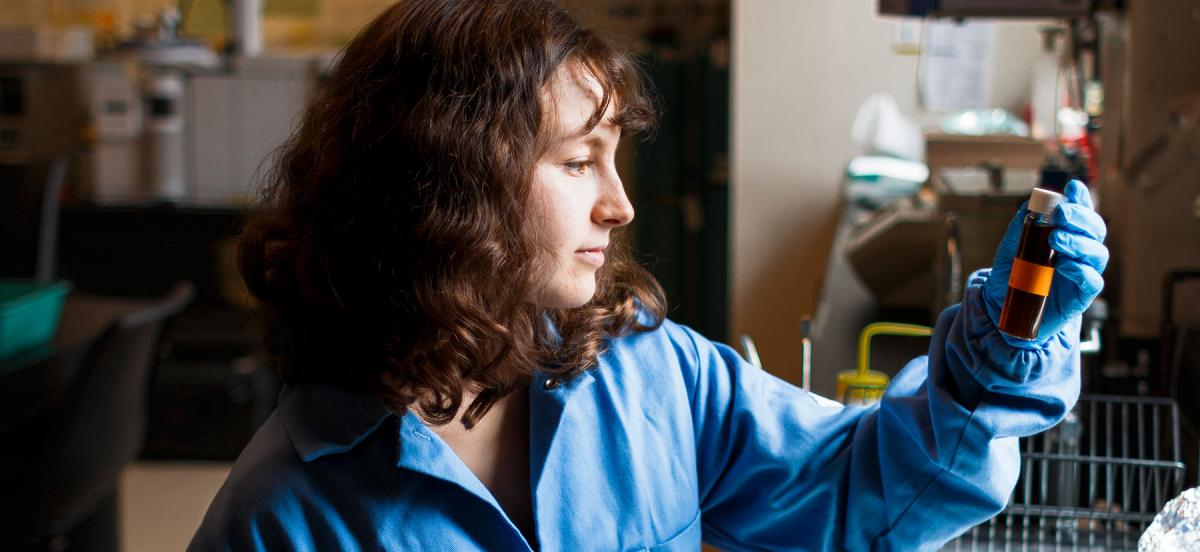Students unlock the secrets of the region’s geology
By Stephanie Widzowski
Mineralogy, one of the four 200-level major requirements for geology students, has been taught in a myriad of ways – some more successful than others. Professor Selby Cull-Hearth has tried everything from lectures to a life-like research experience. She works hard to create the best environment for students every year.
She refuses to assign a textbook because none of them explain mineralogy well enough. So she writes her own chapters on Microsoft Word, draws her own figures, and uploads them all to Moodle.
This year class time is entirely for the students. Need to study for the next exam? Pore over the readings or work with someone else to quiz the concepts. Test your memory with optional Moodle quizzes or get familiar with a tray of minerals in the back of the classroom.
All the deadlines are listed on Google Sheets files Cull-Hearth made, and all students have to do is fill their box in green after finishing something. It’s collaborative, so people can see where others are stuck and offer a hand.Cull-Hearth is there to help too, but students often depend on each other more.
Final exams and papers are standard, but this final is neither.
The class is putting together something the whole Bi-Co can enjoy: an exhibit to go in the long-empty display cases in Park Science Building. It will tell the geologic story of Philadelphia and the evidence behind it.
“The best way to know what you know is by explaining things to others,” said Cull-Hearth.
But telling the entire geologic story of the region, a history over a billion years old? Where should a handful of undergraduate students start? And what does mineralogy have to do with it?
Scholars like Howard Bosbyshell have spent decades studying the region and published papers on their work. To start, each person in the class picked a local rock unit and scanned the articles for any mention of it, trying to figure out the age of the rock and how the experts think it formed.

The major rock units being studied and where they meet the Earth’s surface. Cull-Hearth.
There’s still a lot of uncertainty about the rocks in this region. For one, there are hardly any exposures that aren’t covered in plants or weathered by rain, and getting funding to excavate rock is near impossible. Continue reading


